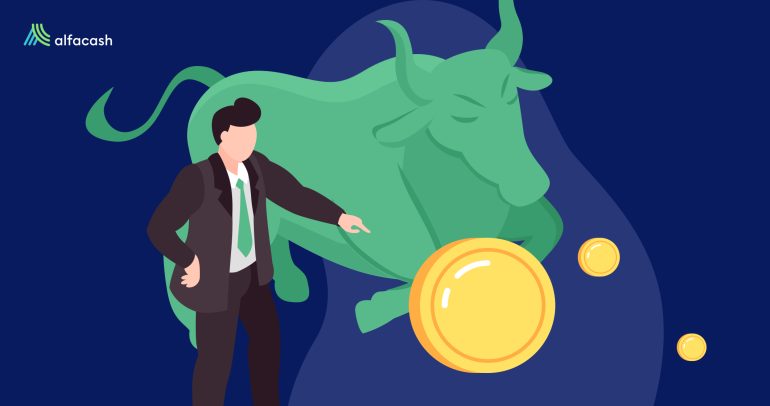The history of BitcoinBitcoin is the first decentralized digital currency. It was created in 2009, by an anonymous founder or group of founders... More (and cryptocurrencies) started in August 2008, when this mysterious guy (girl? Dude/s? Alien?) registered the bitcoin.org domain online. The name was born: Bitcoin. A few months later, someone dubbed “Satoshi NakamotoThe inventor of Bitcoin, which might be one person or a group of people who released the original Bitcoin whitepaper... More” published a white paper with the title “Bitcoin P2P e-cash paper” on the cypherpunk mail list metzdowd.com.
And that was: the very beginning for the first cryptocurrencyA digital currency running on a blockchain and built with cryptography. Contrary to central-bank issued currency, cryptocurrency issuance rules are... More in existence. Not many years after, Bitcoin would hit like a truck into the current financial system, and even some people would appear claiming the Economy Nobel Prize for its creator. That’s nice, but… who is Satoshi Nakamoto?
Sadly, we don’t have that answer yet (and maybe never), and it’s dubious that someone besides him knows and be willing to tell us. So, is that all? Credits? Well, not really. We still have some things to tell about him (them?).
What we know about Satoshi
If something is sure about him, that is the fact he was a fervent cypherpunk (like the mail list we mentioned above, yes). Please note that this isn’t the same as “cyberpunk”: a cypherpunk is an activist who believes in the use of strong cryptography and privacy-enhancing technologies as a route to social and political change.

Eric Hughes published a Manifesto about it in 1993:
“We the Cypherpunks are dedicated to building anonymous systems. We are defending our privacy with cryptographyCryptography is the mathematical basis for secure communication that allows only the sender and intended recipient of a message to... More, with anonymous mail forwarding systems, with digital signatures, and with electronic money. Cypherpunks write code. We know that someone has to write software to defend privacy, and since we can’t get privacy unless we all do, we’re going to write it”.
Of course, this a very important ideal for Bitcoin and Satoshi Nakamoto, and almost the only thing we know with certainty about him. The rest could be true or not because it’s data he shared by himself through his online accounts or mere assumptions:
- He was born on April 5, 1975, in Japan.
- According to the early devs who worked with him (online), his answers were usually weird, elusive, and demanding.
- He probably worked in something else, because the developers working with him at the early stages of Bitcoin always received late responses.
- He is described as a “programming genius”.
- Despite the last one, he never had a GitHub account (where Bitcoin code lies now).
- He hid this message (an English newspaper headline) inside the Bitcoin genesis blockA collection of cryptocurrency transactions. Every few minutes (or seconds, depending on the blockchain) one miner or validator verifies the... More: “The Times 03/Jan/2009 Chancellor on brink of second bailout for banks”.
- The aforementioned factor, along with the fact his English was perfect and contained some British manners, has led some people to believe he was really from the United Kingdom.
- He disappeared from all his accounts in 2010, after gave up the control of Bitcoin to other devs.
- He never touched his huge fortune in BTCAn abbreviation for Bitcoin. after that.
Main suspects of being Satoshi
As might be expected, a lot of people and perhaps some state entities as well have taken their time in trying to figure out who was this mysterious personality. The result of this researches is a bunch of candidates suspected of being Satoshi Nakamoto himself. Let’s check them quickly.
Dorian Nakamoto
He was signaled in 2014 by Leah Mcgrath Goodman for Newsweek Magazine. He is a 70-year-old Japanese-American computer engineer and physicist, who worked in the past with the U.S. Military and several technological and financial firms. His birth name is, indeed, Satoshi Nakamoto, but he denied being the creator of Bitcoin.

From his account in the P2P Foundation, the Bitcoin creator appeared for the first time in years just to say that he wasn’t Dorian Nakamoto. Curiously enough, his image liked among the community and now his face always works to represent the original Satoshi and make a lot of memes.
Nick Szabo
Known as the father of smart contracts (your Yield Farming wouldn’t be possible without him), he is a 56-years-old American computer scientist, cryptographer, and pioneer in digital currency. The blogger Skye Grey, in 2013, was the first one to signaled him using some Stylometry, which analyzes the unique individual style for writing. Grey wasn’t the last one, though.
About that and as a response to a 2014 research, Szabo himself wrote: “Thanks for letting me know. I’m afraid you got it wrong doxing me as Satoshi, but I’m used to it”.
Wei Dai
Remember that cypherpunk mail list? Wei Dai was part of it. He is a 44-years-old American-Chinese computer engineer, who created the “b-money”, the direct predecessor of Bitcoin. His work, indeed, it’s referenced in the Bitcoin white paper and he was contacted by Satoshi himself.
However, he’s said this about it: “… my understanding is that the creator of Bitcoin, who goes by the name Satoshi Nakamoto, didn’t even read my article before reinventing the idea himself. He learned about it afterward and credited me in his paper. So my connection with the project is quite limited”.
Hal Finney

He was a notable developer and cypherpunk, creator of the first reusable Proof of Work (PoW) system before Bitcoin, and the person who received the very first Bitcoin transactionA cryptocurrency transaction is an entry on the blockchain ledger, noting sender, receiver and number of coins transacted. More, from Satoshi himself. He was one of the early adopters and developers of the cryptocurrency, so, it was just a matter of time for him to be suspected as Satoshi Nakamoto.
The first one to make it official with another Stylometry analysis was Andy Greenberg from Forbes. Finney denied being Satoshi, and later the company in charge of the Stylometry kind of denied too. Sadly, Finney died in August 2014 at 58 years old, due to complications of ALS.
Craig Wright and Dave Kleiman
Wright is a 50-years-old Australian computer scientist and businessman, while Kleiman (his personal friend) was an American computer forensics expert who died in tragic circumstances by April 2013, at 46 years old. According to Wired, Gizmodo, and Wright himself, they were the creators of Bitcoin under the pseudonym Satoshi Nakamoto.

However, he never was able to prove that claim, despite he insists on it even to date. When the first reports that pointed to him appeared in 2015, the official Satoshi Nakamoto mail addressAn address is a blockchain equivalent to a bank account number in the traditional financial system, or an email address.... More sent its last message to Bitcoin developers: “I am not Craig Wright. We are all Satoshi”.
Other suspects
Reports and theories by different personalities and media have chosen other several candidates:
- Vili Lehdonvirta, a forty-year-old Finnish researcher at the Helsinki Institute for Information Technology; and the cryptographer Michael Clear [The New Yorker].
- Shinichi Mochizuki, a 51-year-old Japanese mathematician [Ted Nelson].
- Ross Ulbricht, the famous creator of Silk Road, a Darknet market that used to work with Bitcoin [NYT].
- John Forbes Nash, Nobel Prize in Economic Sciences [Travis Patron].
- Elon Musk, founder and CEO of SpaceX, Tesla Inc., and Neuralink [Sahil Gupta].
- Bram Cohen, founder of P2P service BitTorrent [Mark Essien]
- Ian Grigg, financial cryptographer and cypherpunk [Graham Smith]
- Adam Back, a British (and cypherpunk) businessman who created the PoW system Hashcash before Bitcoin and is the current CEO of the crypto-company Blockstream, very related to Bitcoin Core [Barely Social].
- Paul Le Roux, a Zimbabwean former programmer and criminal mastermind in the world of drugs; now in prison [Wired].
- Yasutaka Nakamoto, supposedly an engineer and brother of Dorian Nakamoto, who use to work with the cartel boss Pablo Escobar and disappeared from public view in 1992 [CoinTelegraph].
Why Satoshi remained anonymous?

First things first: Satoshi created Bitcoin as open-source software, basically without a license. He was a cypherpunk, ergo, he wanted to make something really decentralized and not depending on just one individual, entity, or company. Only in this way, Bitcoin would be really strong and almost impossible for governments to censor or kill.
Whoever was, Satoshi Nakamoto was more interested in his cypherpunk ideals than in taking the fame and fortune just for him. Although, other reason might be his personal safety. The authorities —and criminals— would go after him if they knew, as we already saw in some fiction books and TV series.
Another reason would be, of course, the fact that he can’t reveal his identity because isn’t enabled to do it, the consequences would be dreadful or it wouldn’t let him have some real advantage. Maybe he’s in prison, or is a fugitive? Maybe he’s dead? Maybe they are a secret organization or state entity?
We don’t know. And perhaps that is for the best.
Wanna trade BTC, ETH, and other tokens? You can do it safely on Alfacash! And don’t forget we’re talking about this and a lot of other things on our social media.
Twitter * Telegram * Instagram * Youtube *Facebook * Vkontakte








